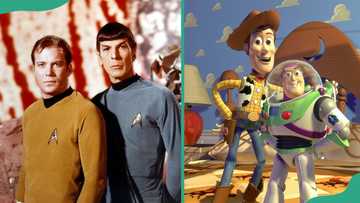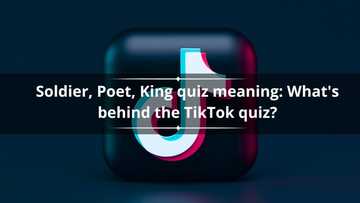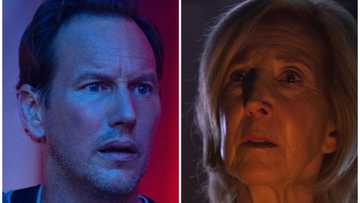7 types of drama in literature explained (with examples)
What comes to your mind when you hear the word drama? Most people think of something created for theatre, television, or radio. There are multiple types of drama in literature, each with unique elements or characteristics. All have a place in modern culture and should be appreciated.
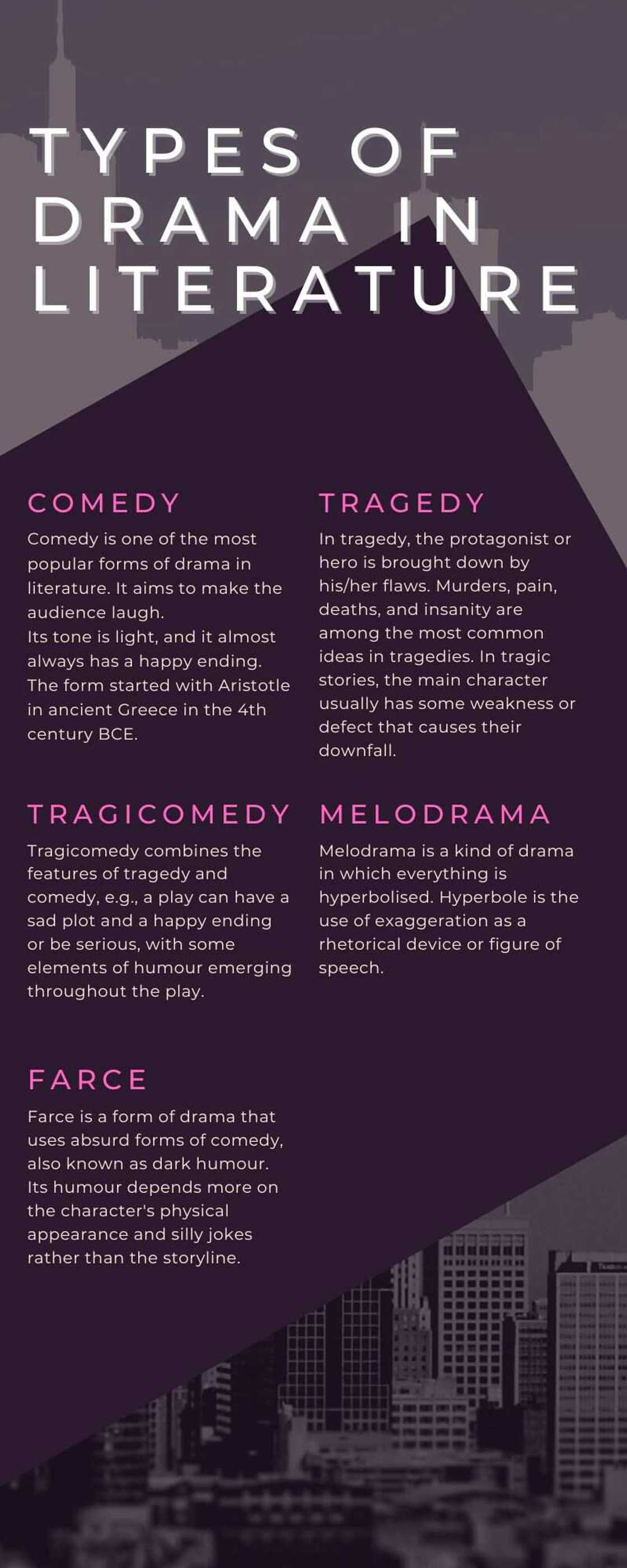
Source: UGC
TABLE OF CONTENTS
Understanding the various types of drama is important for people who enjoy literature, acting, and other forms of artistic creation. Drama is usually performed rather than read. Discover the types of drama in literature with examples below.
Types of drama in literature: All you need to know
Dramas are normally called plays. Their creators are known as dramatists or playwrights. They have been performed since the days of Aristotle, i.e. around 335 BCE.
What is drama in literature and types of drama?
The word drama was derived from the Greek words δρᾶμα and δράω. The first means an act or play, while the latter means to act or take action.
In literature, drama encompasses the portrayal of fictional or non-fictional events through the performance of written dialogue. Through it, stories and events are brought to life by actors on a stage.
Aristotle, a famous Greek philosopher, defined it as a poetic composition acted in front of audiences in a theatre. Its purpose is to arouse and purge the audience's emotions, thus strengthening them emotionally. It combines performance, dance, music, and props.
Kinds of drama in literature
Below is an exploration of the various forms of drama in literature. The elements of drama are scenery and costume, musical score, libretto, characterisation, plot, and thought content.
1. Comedy
Comedy is one of the most popular forms of drama in literature. It aims to make the audience laugh.
Its tone is light, and it almost always has a happy ending. The form started with Aristotle in ancient Greece in the 4th century BCE.
Examples of drama are Noises Off by Michael Frayn and The Simpsons. The latter had a 26-year run. Most characters on the show had hilarious characters.
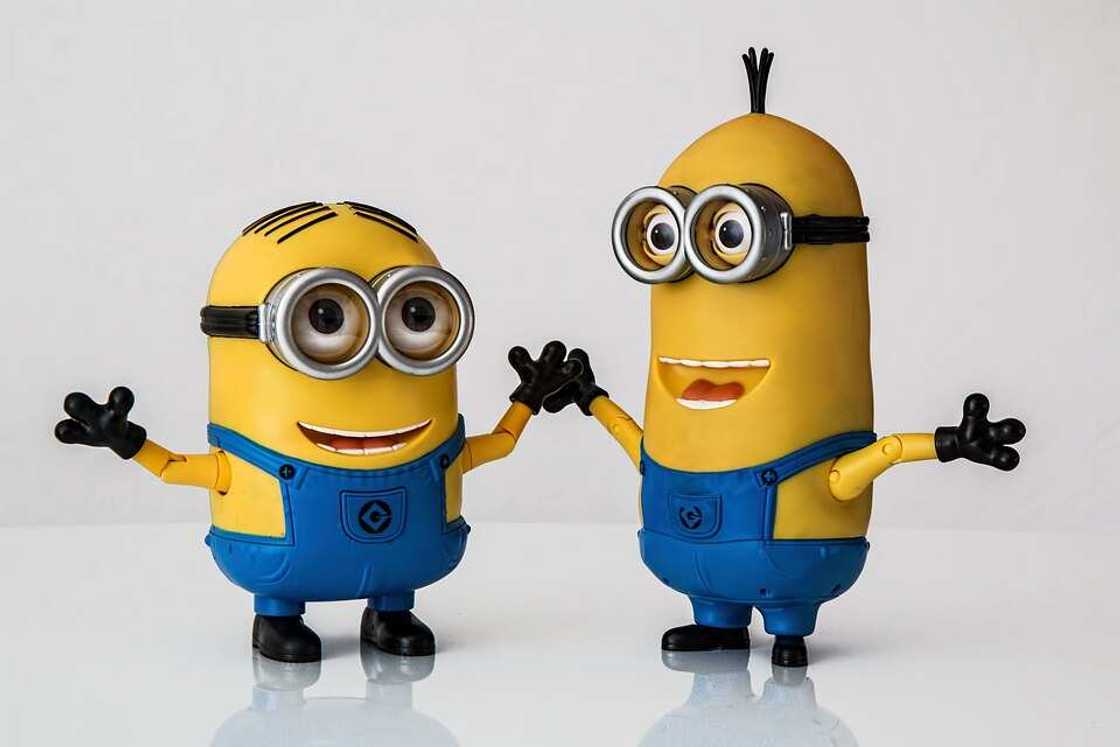
Source: UGC
2. Tragedy
In tragedy, the protagonist or hero is brought down by his/her flaws. Murders, pain, deaths, and insanity are among the most common ideas in tragedies. In tragic stories, the main character usually has some weakness or defect that causes their downfall.
Tragedy aims to release certain emotions from the audience. It arouses sensations of pity and fear. Actors leave the theatre with an understanding of the ways of gods and men.
The audience's catharsis comes from witnessing disastrous and moving changes in the protagonist's fortunes. Examples are Hamlet, Oedipus Rex, Romeo and Juliet, and Julius Caesar.
3. Tragicomedy
Tragicomedy combines the features of tragedy and comedy. For example, a play can have a sad plot and a happy ending, with some elements of humour emerging throughout the play.
Unlike comedy and tragedy, tragicomedy emerged a bit later, in the times of the Roman Empire. Roman dramatist Plautus was the first person to write a tragicomedy.
In his play Amphitryon, he used the lightheartedness of comedy but chose gods and kings as the main characters. He noted that every human being's life features some tragedy and comedy. An example is The Merchant of Venice.
4. Melodrama
Melodrama is a kind of drama in which everything is hyperbolised. It is the use of exaggeration as a rhetorical device or figure of speech.
Usually, themes depicted in melodramas are simple and without any unpredictable plot twists. There are quite a lot of stereotypes in such dramas.
The primary goal of a melodrama is to awaken the audience's feelings. Melodramas are mostly love stories with charming heroes, scary villains, and beautiful heroines.
Melodrama originated much later than comedy, tragedy, and tragicomedy. It first appeared in France at the end of the 18th century. Examples are All That Heaven Allows by Douglas Sirk and Now Voyager by Olive Higgins Prouty.
5. Farce
Farce is a form of drama that uses absurd forms of comedy, also known as dark humour. Its humour depends more on the character's physical appearance and silly jokes than the storyline.
Farce differs from a comedy in that the plot is primarily illogical, and the occurring events are impossible. Examples are Airplane! by Jim Abrahams and Waiting for Godot by Samuel Beckett.
6. Opera
Opera is a staged drama entirely set to music. It consists of vocal pieces with instrumental accompaniment, usually with orchestral overtures and interludes.
In some operas, the music is continuous throughout an act. In others, it is broken up into discrete pieces separated by spoken dialogue or recitative. Examples are La traviata by Verdi, Carmen by Bizet, and Die Zauberflöte (The Magic Flute) by Mozart.

Source: UGC
7. Musical
Musicals combine songs, spoken dialogue, dance, and acting. It is pretty easy to confuse them with operas. In an opera, the lines are sung, but a musical employs dialogues infused with music performances. Examples are The Sound of Music and My Fair Lady.
What is tragicomedy meaning?
Tragicomedy is a literary or dramatic genre that blends elements of both tragedy and comedy. It features serious themes and situations that might typically lead to a tragic outcome, but these are softened or resolved with humorous or uplifting moments.
What are the various genres of drama?
Drama encompasses a wide range of genres, each offering unique storytelling styles and themes. The primary genres include comedy, tragedy, tragicomedy, melodrama, farce, opera and musical.
What are the elements of drama?
The elements of drama are plot, musical score, scenery and costume, libretto, thought content, and characterisation.
What are the different types of costumes in drama?
The main types of costumes in theatre are historical, fantastical, dance, and modern.
What makes drama different from other genres?
Drama stands out from other genres because of its intense focus on emotional and relational conflicts. It often depicts realistic and deeply personal stories. Unlike fantasy or sci-fi, drama typically portrays relatable, everyday characters facing challenges that feel grounded in reality.
What are the characteristics of a drama?
Drama is characterized by its focus on emotional depth, realistic characters, and conflict-driven narratives. It often portrays relatable situations and explores themes like love, loss, morality, or personal growth.
What makes drama more interesting?
Drama becomes more interesting because of its ability to evoke deep emotions and create relatable connections with the audience. It's realistic characters and intense conflicts draw viewers in, while the exploration of universal themes keeps them engaged.
Drama in literature serves as a mirror to human emotions, relationships, and societal dynamics. By understanding the different types of drama in literature, you can now better appreciate the artistry behind storytelling and the timeless impact of drama in shaping cultural and individual identities.
Legit.ng recently published a guide on how to write the background of a study in research. The background of the study is one of the key aspects you need to get right when you are writing a research paper.
The background is the key to introducing the audience to your research topic. It is different from the lead part. It is more in-depth and explains why your research topic or thesis is worth your readers' time.
Source: Legit.ng

Cyprine Apindi (Lifestyle writer) Cyprine Apindi is a content creator and educator with over six years of experience. She holds a Diploma in Mass Communication and a Bachelor’s degree in Nutrition and Dietetics from Kenyatta University. Cyprine joined Briefly.co.za in mid-2021, covering multiple topics, including finance, entertainment, sports, and lifestyle. In 2023, she finished the AFP course on Digital Investigation Techniques. She received the 2023 Writer of the Year Award. In 2024, she completed the Google News Initiative course. Email: cyprineapindi@gmail.com

Adrianna Simwa (Lifestyle writer) Adrianna Simwa is a content writer at Legit.ng where she has worked since mid-2022. She has written for many periodicals on a variety of subjects, including news, celebrities, and lifestyle, for more than three years. She has worked for The Hoth, The Standard Group and Triple P Media. Adrianna graduated from Nairobi University with a Bachelor of Fine Arts (BFA) in 2020. In 2023, Simwa finished the AFP course on Digital Investigation Techniques. You can reach her through her email: adriannasimwa@gmail.com


